
Single line diagrams of substations 66/11 kV and 11/0.4 kV EEP
1.2 DIAGRAMS AND SCHEMATICS. Electrical diagrams and schematics of the substations must be available and up- to-date. Diagrams and schematics must be studied to understand the operation of the systems and the location and connections of all circuits. Protective devices, alarms, and interlocking circuits all are intended to protect the system.

Single line Diagram of 11kv/440v Substation SUNELECTRICAL ಕನ್ನಡ
Indoor substations Substation cabling 1. Medium voltage substations There are three common ways that an 11kV supply may be provided to a site: by a ring main, by duplicate feeders, or by a radial feeder or a single spur from a radial feeder. The duplicate supply may be provided with either automatic or manual changeover facilities.

Typical Layout Designs Of Kv Indoor Distribution Substation Eep My
Electrical Substation. Definition: The electrical substation is the part of a power system in which the voltage is transformed from high to low or low to high for transmission, distribution, transformation and switching. The power transformer, circuit breaker, bus-bar, insulator, lightning arrester are the main components of an electrical.
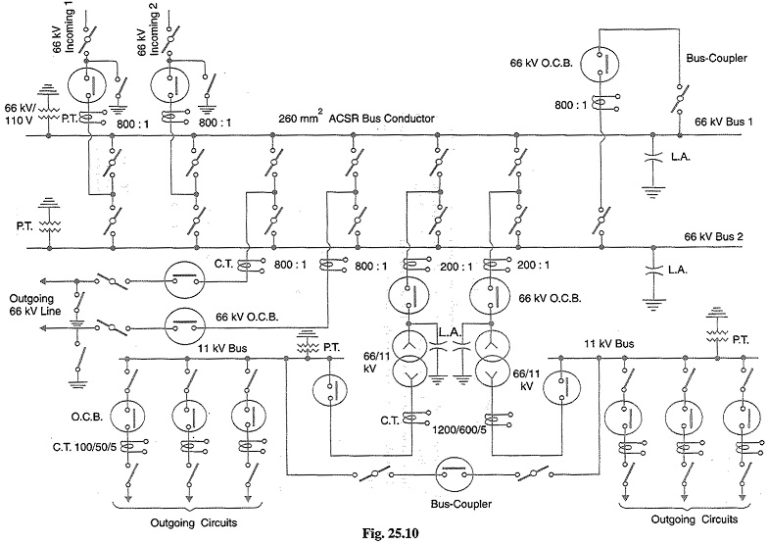
Key Diagram of Substation Key Diagram of 11kv/400v Indoor Substation
The key diagram and the layout diagram of an indoor substation is shown in figure. The transformer is the most important equipment in a substation. For an indoor substation, the transformer shall have cable boxes at the HT and LT ends.
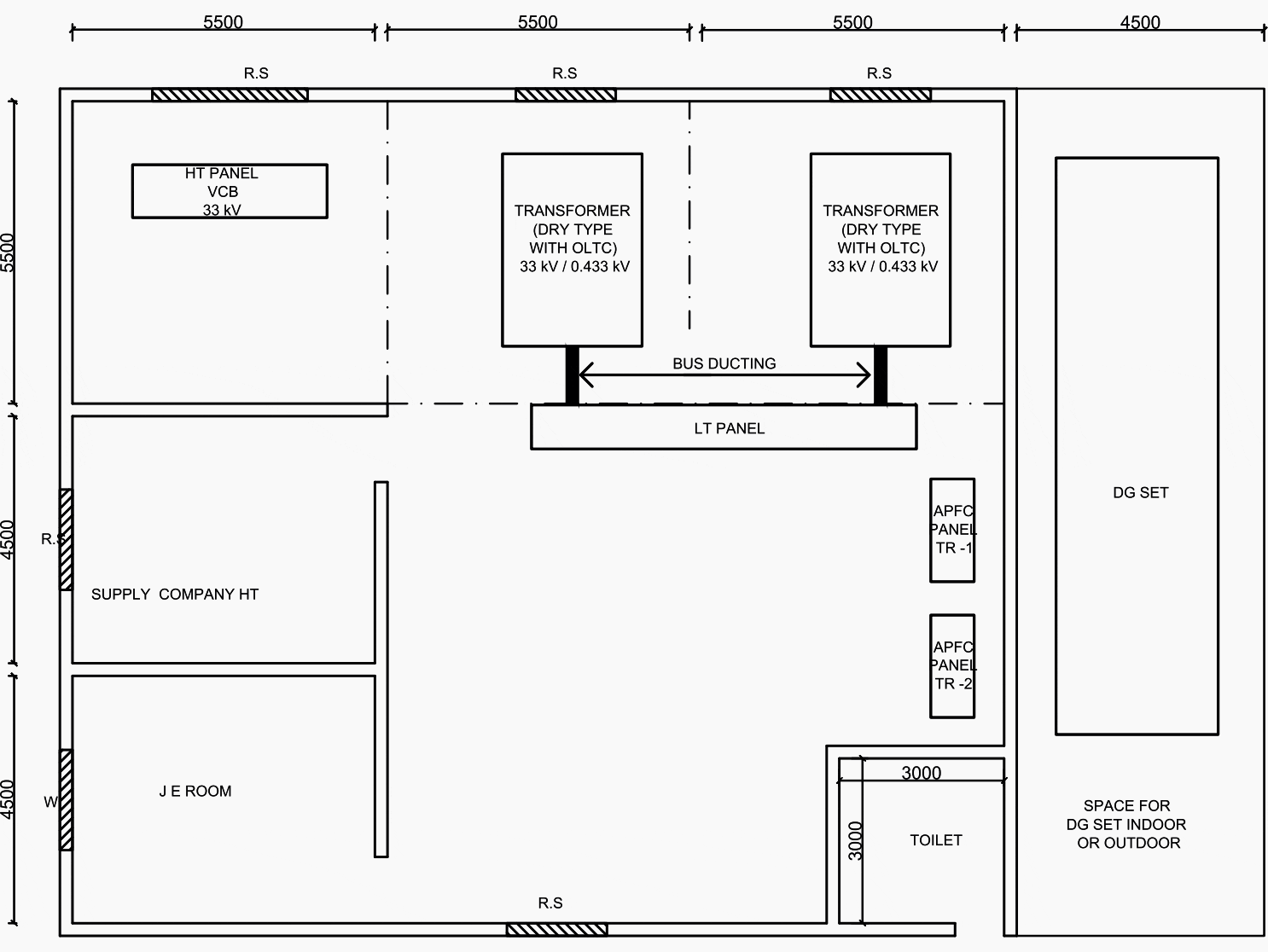
Electrical Substation Layout
Key Diagram of Substation | Key Diagram of 11kv/400v Indoor Substation Key Diagram of Substation 66/11KV: Fig. 25.10 shows the key diagram of a typical 66/11 kV sub-station. The Key Diagram of Substation can be explained as under: 1. There are two 66 kV incoming lines marked 'incoming 1' and 'incoming 2' connected to the bus-bars.
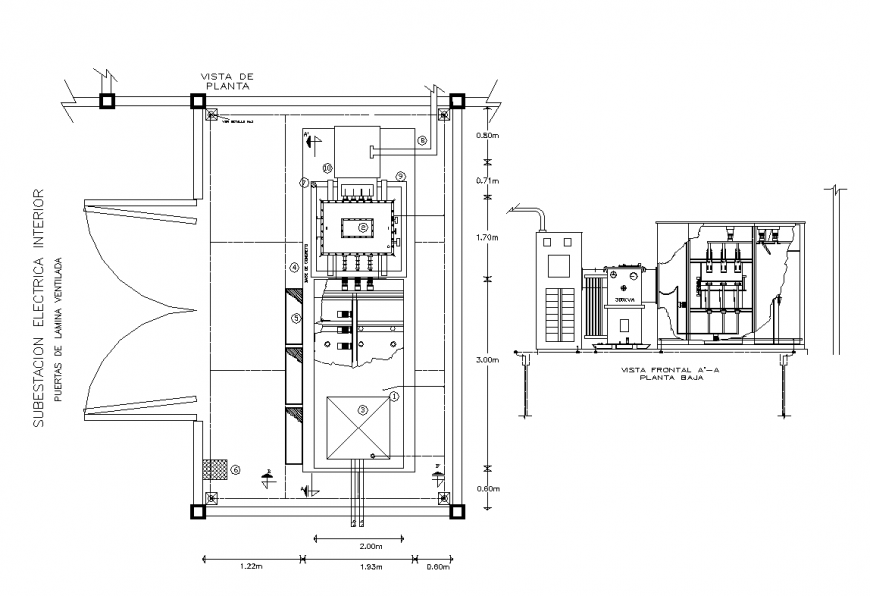
Electrical substation interior design with plan and elevation dwg file
The electricity substation is a network of electrical equipment which is connected in a structured way in order to supply electricity to end consumers.
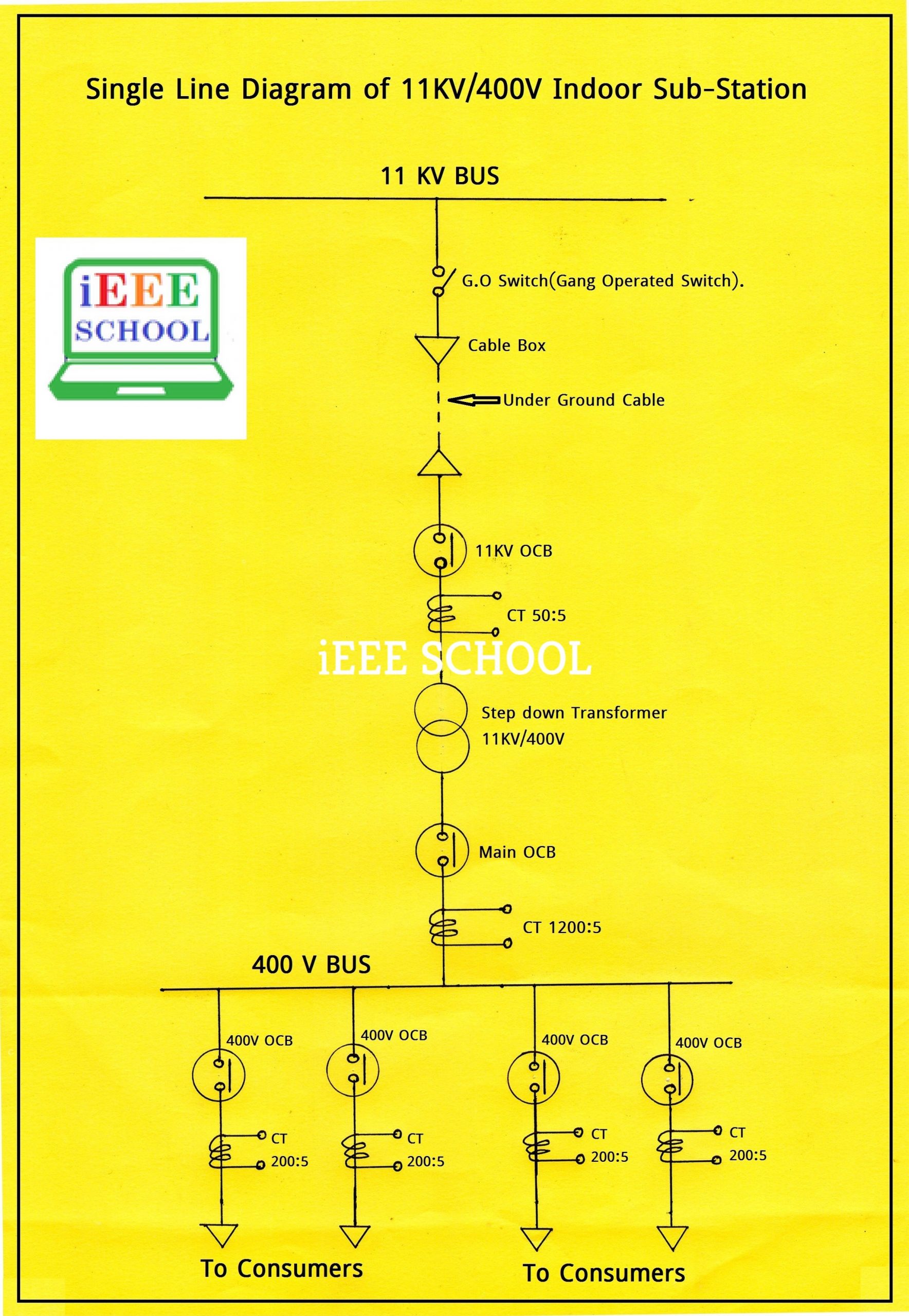
প্রশ্ন একটি 11KV/400V Indoor SubStation এর Single Line Diagram Draw
Different Layouts for Substation. The substation is the part of an electrical supply system which transmits the high voltage from the generating substations to the local distribution networks. Between the generation and distribution, the voltage may vary through several substations. The different types of layout for substation are explained.

7 typical layout designs of 11kV indoor distribution substation EEP
The single line diagram makes the system easy and it provides the facilitates reading of the electrical supply and connection. Main Components of 11kV Substation The working of the electrical equipment used in the substation is explained below in details.

Schematic of an indoor substation. Download Scientific Diagram
Substations usually include a ground mat. A ground mat is a system of bare conductors, on or below the surface, connected to a ground to provide protection from high voltages. Purpose of Substations. One purpose of a substation is to contain the equipment for changing electric energy from one voltage to another.
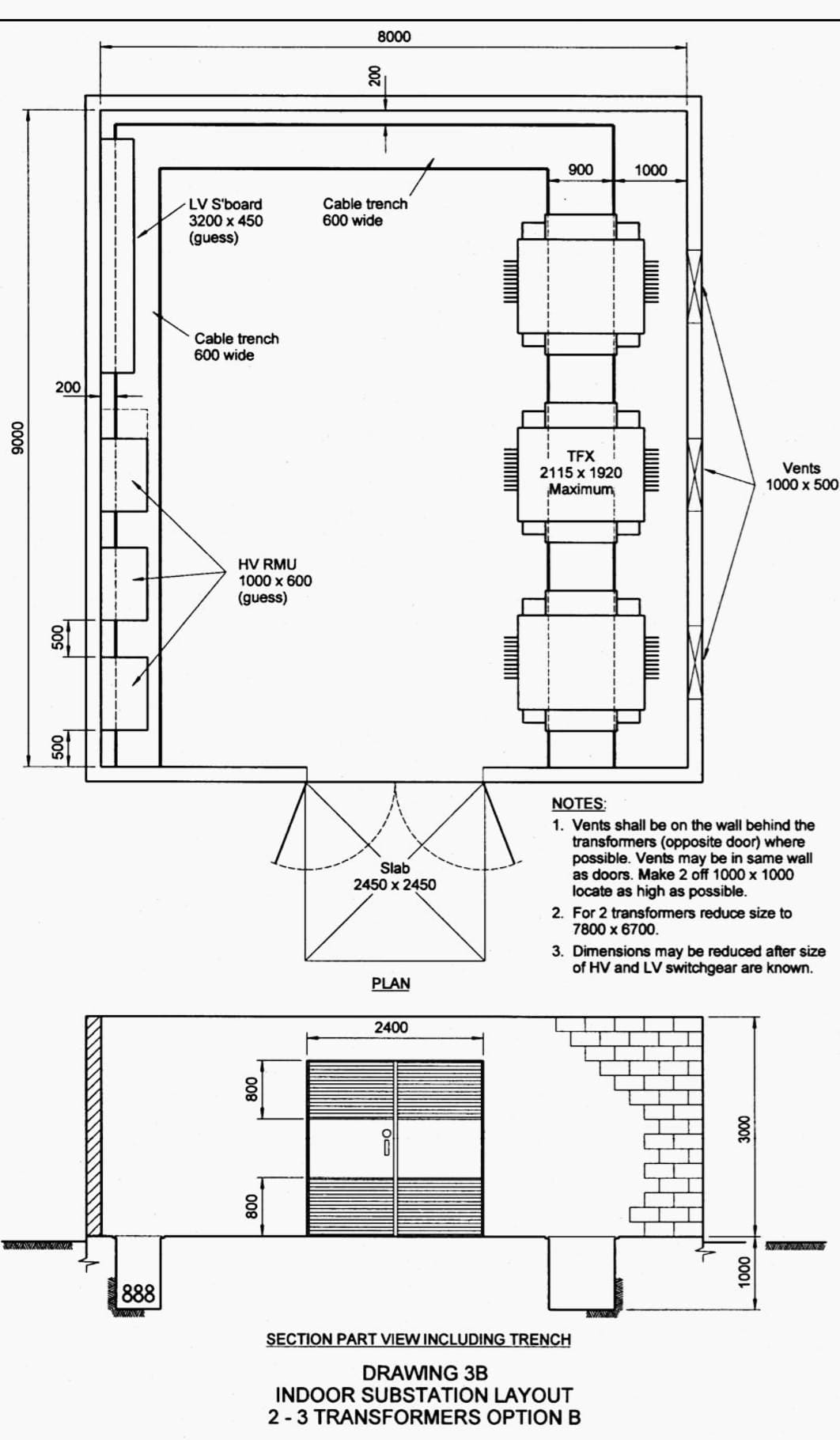
7 typical layout designs of 11kV indoor distribution substation EEP
Remark: The cast-resin dry-type transformer does not need a fire protection oil sump. However, periodic cleaning of the transformer is needed. Fig. B47 - General arrangement of a LV metering substation. 1: HV Switchboard, 2: Transformer, 3: LV switchboard, 4: Electronic devices / Capacitors. Fig. B48 - Examples of general arrangements of LV.
Grounding Design Calculations Part Twelve Electrical Knowhow
Indoor distribution substation layout with: 1 transformer LV switchgear HV switchgear (RMU - Ring main unit) Indoor distribution substation layout with 1 transformer and LV/HV switchboards Layout design drawing 3 Indoor distribution substation layout (OPTION A) with: 3 transformers
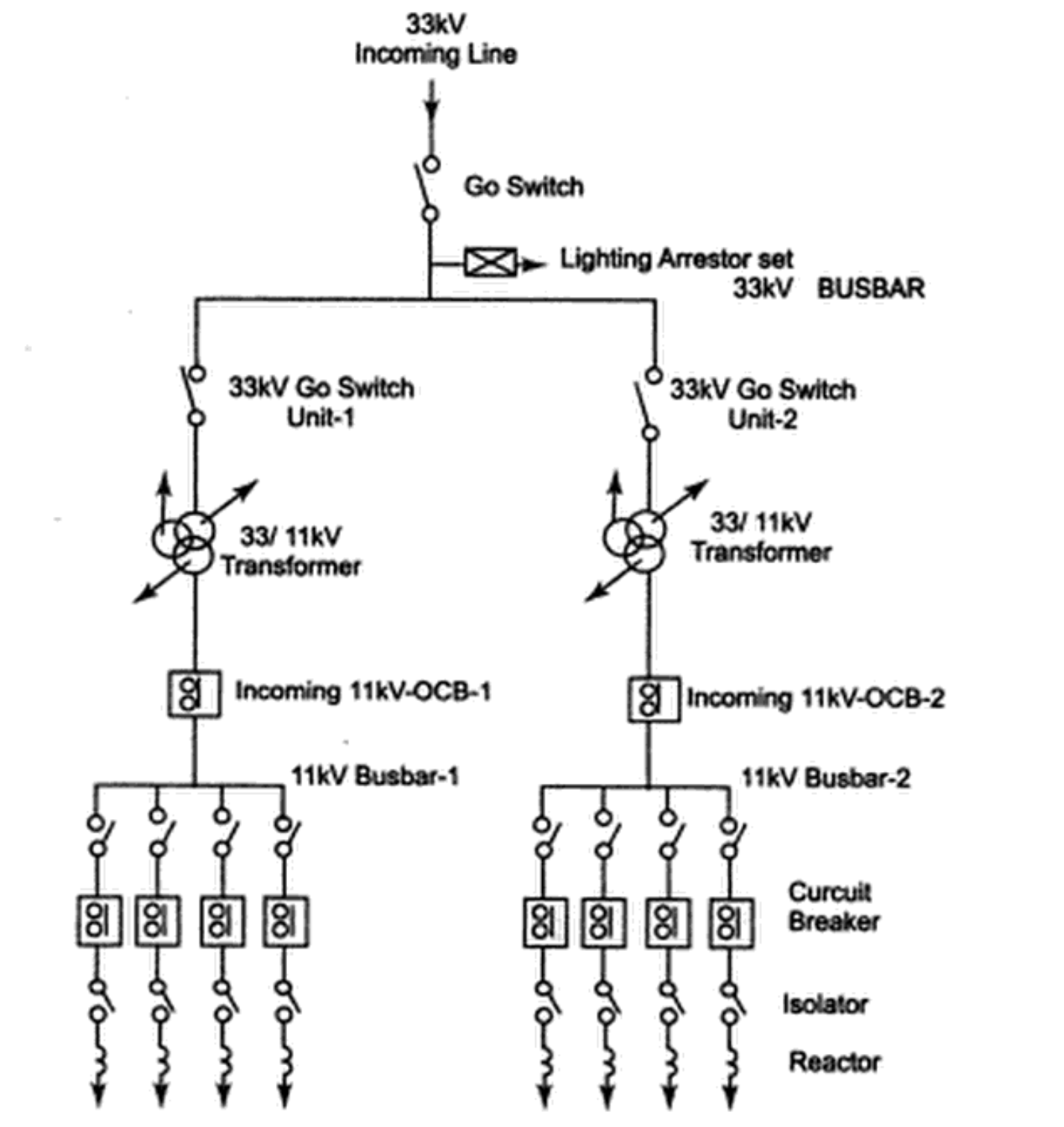
Electrical Substation Definition, Layout, and Uses of Substations
Indoor Substations: In these substations, the apparatus is installed within the substation building. Such substations are usually for a voltage up to 11,000 V but can be erected for 33,000 V and 66,000 volts when the surrounding atmosphere is contaminated with impurities such as metal corroding gases and fumes, conductive dust etc.

7 typical layout designs of 11kV indoor distribution substation EEP
Single line diagram Figure 1 shows the single-line diagram of a typical 66/11 kV substation. Let's explain the main parts of it and how it actually works. There are two 66 kV incoming lines marked 'incoming 1' and 'incoming 2' connected to the bus-bars. Such an arrangement of two incoming lines is called a double circuit.
VNIT 11kV indoor substation Common Electrical Doubts
A substation is a part of an electrical generation, transmission, and distribution system. Substations transform voltage from high to low, or the reverse, or perform any of several other important functions. Between the generating station and consumer, electric power may flow through several substations at different voltage levels.
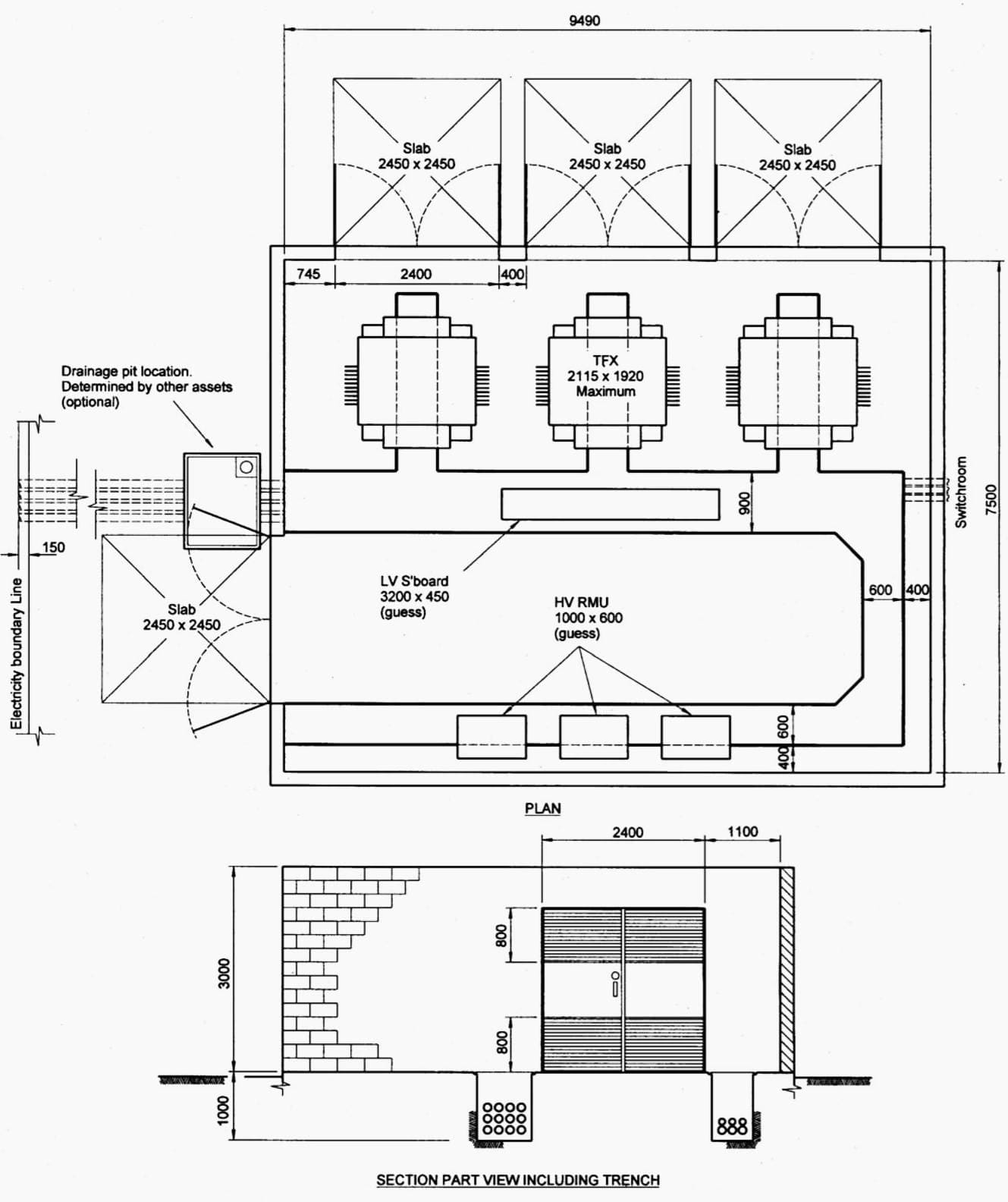
7 typical layout designs of 11kV indoor distribution substation EEP
What is Indoor Substations? Definiion & its Meaning - Circuit Globe Indoor Substation A substation in which the apparatus is equipped inside the substation building is called indoor substation.

7 typical layout designs of 11kV indoor distribution substation EEP
Distribution substation Distribution substation typically operates at 2.4 - 34.5 kV voltage levels, and deliver electric energy directly to industrial and residential consumers. Distribution feeders transport power from the distribution substations to the end consumers' premises.